Useful links
A webpage from Hayes on modernity and Canadian Anglicanism
Modernity from the Mennonite Historical Society of Canada
A number of articles on family and religion from the Vanier Institute on the Family: Reginald Bibby, Donald Swenson, Thomas Moore
Focus on the Family Canada, a conservative Christian group
Marriage and family resources from the United Church of Canada
Canadian Lutherans (ELCIC) on same-sex unions
Presbyterian Church in Canada documents on sexuality and other matters
Chronology of marriage and sexuality issues in the United Church, from the current moderator
The Congregational Christian Churches of Canada, which grew after the 1988 United Church decision on homosexuality
Study papers, progressive and conservative, on Anglicanism and homosexuality, from the diocese of New Westminster (lower mainland, British Columbia). Note downloads in upper right hand corner of the linked page.
Other materials on this issue from the diocese of New Westminster
Short chronology on the issue of homosexuality in the Anglican Church of Canada, from a conservative group of New Westminster churches; another chronology , from the diocese itself
Integrity Canada, which favours blessings of same sex unions
Fidelity, BC chapter, which opposes such blessings
Victor Shepherd, a conservative United Church theologian, critiques his denomination's position on homosexuality
Print bibliography
Phyllis D. Airhart, "Women in the United Church of Canada," in Encyclopedia of Women and Religion in North America (forthcoming)
Daphne J. Anderson and Terence R. Anderson, "United Church of Canada: Kingdom Symbol or Lifestyle Choice" in Faith Traditions and the Family, ed. Phyllis D. Airhart and Margaret Lamberts Bendroth (1996)
"The Changing Roles of Women and Men," Task Force Report, 1984
Nancy Christie, "Sacred Sex: The United Church and the Privatization of the Family in Post-War Canada," in Households of Faith: Family, Gender and Community in Canada, 1760-1969 (2002)
Marriage Breakdown, Divorce, Remarriage: A Christian Understanding (1962)
"Report of the Commission on Abortion," Record of Proceedings, 1980
Michael Riordin, The First Stone: Homosexuality and the United Church (1990)
Loraine MacKenzie Shepherd, "United Amidst Diversity?:The Crisis over Homosexuality within the United Church of Canada," Uniting Church Studies 1/2 (1995): 1-10
Squire, "Homosexuality, Ordination, and the United Church of Canada," Queen's Quarterly 98/2 (1991): 338-351)
"Sexual Orientations, Lifestyles and Ministry," (Minutes) Record of Proceedings, 1988
United Church New Curriculum
Olive D. Sparling, "United Church of Canada Board of Christian Education, 1925–1971" (1979–1980) [Finding Aid #160, United Church Archives; history of Christian education and a finding aid for New Curriculum]
- United Church of Canada, Board of Christian Education, The Call: The Church calling every adult to a deepening of their personal Christian faith and life, 19--.
- Donald Mathers, The word and the way, 1962. Adult.
- Norman McNairn, The word and the way: study guide, 1962. Adult.
- Sarah Klein Clarke, Come to Church, 1964. Nursery.
- Sarah Klein Clarke, Love One Another, 1964. Nursery.
- Kingsley Joblin, The nursery teacher's guide, 1964.
- Robert K. N. McLean, Time for Each Other, 1964. Kindergarten.
- Robert K. McLean, Jesus and the Children, 1964. Kindergarten.
- Robert K.N. McLean, The Kindergarten Teacher's Guide, 1964.
- Audrey McKim, God Is Always With Us, 1964. Primary (Grades 1, 2, 3).
- John Wilkie, The Primary Teacher's Guide, 1964.
- Peter Gordon White, The Mystery of the Rock: a book for juniors, 1964. (Grades 4, 5, 6.)
- Peter Gordon White, The Mystery of the Rock, 1964. Teaching aid for children ages 9-11.
- Robert Dobbie and others, The Junior Teacher's Guide, 1964. Grades 4, 5, 6.
- Frank H. Morgan, God speaks through people, 1964. Intermediates, Grades 7, 8, 9.
- John B. Hardie, The Mighty Acts of God, 1964. Grades 10, 11, 12.
- Ivor Williams, The senior teacher's guide, 1964. Grades 10, 11, 12.
- R.M. Freeman, The Senior Teacher's Guide, 1967. Grades 10 and up.
- James Sutherland Thomson, God and his purpose, 1964. Adult basic book.
- Norman McNairn, God and his purpose: study guide, 1964. Adult basic book.
- John B. Corston, Panorama of the Bible, 1967. Adult basic book, 4.
- John B. Corston, Norman McNairn. Panorama of the Bible: study guide, 1967. Adult basic book, 4.
- Fritz Schmidt, Man Alive, 1968. Adult basic book, 5.
- Morley G. Clarke, Session Plans for 'Man alive,' 1968.
- Ivan Cumming, Choice in Change, 1969. Adult basic book, 6.
Year 2 theme, Jesus Christ and the Christian Life
- United Church of Canada, Board of Christian Education. The message: second emphasis of the preparation period for the new curriculum, 1961.
- Kenneth Chamberlain and Nandy Johnston, Friends Together, 1965. For ages 4-5.
- Nandy Johnston, Praise him, praise him, 1965. Kindergarten.
- George Johnston, The kindergarten teacher's guide, 1965.
- Patricia M. Hughes, Fairest Lord Jesus, 1965. Grades 1, 2, 3.
- Edwin Cyril Blackman, The Primary Teacher's Guide, 1965. Grades 1, 2, 3.
- William F. Clarke, The Clue to the Mystery: a book for juniors, 1965. Grades 4, 5, 6.
- John B. Corston, The junior teacher's guide, 1965. Grades 4, 5, 6.
- Bruce McLeod, Remember the Lord, `965. Grades 7, 8, 9.
- Lois Boast, Intermediate Teacher's Guide, 1965. Grades 7, 8, 9.
- Lyman Eveleigh Smith, Power to Become, 1965. Grades 10, 11, 12.
- Kingsley Joblin, The Senior Teacher's Guide, 1965. Grades 10 and up.
- Norman McNairn, Jesus Christ and the Christian Life: study guide, 1965. Adult basic book.
- Arthur B.B. Moore, Jesus Christ and the Christian Life, 1965. Adult basic book.
Year 3 theme, The Church and the World
- W. Morrison Kelly, The Primary Teacher's Guide, 1966. Grades 1, 2, 3.
- Charlotte L. Stewart, This Is My Church, 2nd ed. 1966. Grades 1, 2, 3.
- Emlyn Davies, The junior teacher's guide ... , 1966. Grades 4, 5, 6.
- Isabel Squires Clark, The Mystery Continues, 1966. Juniors, grades 4, 5, 6.
- Robert A. Wallace, Run with Courage, 1966. Grades 7, 8, 9.
- R.C. Chalmers, Project: World, 1966. Grades 10, 11, 12.
- J. Arthur Boorman, The Senior Teacher's Guide, 1966. Grades 10 and up, related to Project: World.
- Norman McNairn, The Church and the World: study guide, 1966. Adult basic book.
- Gerald R. Cragg, The Church and the World, 1966. Adult basic book.
Anglican Church New Curriculum
Author: "Anglican Church of Canada. Department of Religious Education." (Sometimes "General Synod" is added. Sometimes "Department of Religious Education" is omitted.)
- Parish Education for Confirmation, Ages 12-14: A leader's manual, 1967
- More than words: a resource book for parish education, 1965.
- Parish education teacher's manual, 11 volumes, 1965-1967, Sub-title varies: vols. for junior and middle high called Leader's manuals.
- Working with young people age 15-19 : a basic
guide for adults working with youth groups,
1965. History note: "Based on Leading Young People, prepared by the Department of Christian Education of the Protestant Episcopal Church in the United States of America." - Parish education papers,
[1963.] Several numbers. No. 2 is entitled: "Opportunities implied in the introduction of a new curriculum," by Michael Creal.
Secular theology
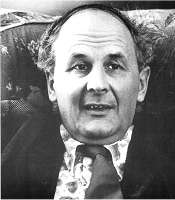 The
1960s saw a decline not only in church-going, but also in public discourse
about churches and in traditional Christian pieties and doctrines. But
this doesn't necessarily mean that interest in religion faded away. Many
Canadian Protestants tried to save a place for religion by constructing
a Christianity more adapted to modernity. This Christianity typically
looked less institutional and less doctrinally defined than what mainstream
Protestantism had previously offered — indeed, in some cases it was
positively anti-institutional and anti-doctrinal.
The
1960s saw a decline not only in church-going, but also in public discourse
about churches and in traditional Christian pieties and doctrines. But
this doesn't necessarily mean that interest in religion faded away. Many
Canadian Protestants tried to save a place for religion by constructing
a Christianity more adapted to modernity. This Christianity typically
looked less institutional and less doctrinally defined than what mainstream
Protestantism had previously offered — indeed, in some cases it was
positively anti-institutional and anti-doctrinal.
Theologically, the two most notable approaches to this new modernizing project were "secular theology" and "death of God theology". The two books which made the biggest impact were Honest to God (1963) by John A.T. Robinson (1919-1983), bishop of Woolwich in England, who proposed a kind of non-theistic Christianity; and The Secular City (1965) by Harvey Cox (born 1929), a theologian and Baptist minister at Andover Newton Theological College (he moved in 1965 to Harvard Divinity School), who urged a religion without myth and symbol. These were just two of a great many writings in "secular theology". (Pierre Berton's The Comfortable Pew [1965] shares many of the assumptions too, although Berton didn't pretend to be a theologian or even a Christian.) These theologians were particularly influential because they were popularizing, breezy stylists. The "death of God" theologians, by contrast, had academic pretensions and wrote so densely as to be scarcely intelligible to anyone. This reduced their impact. Most prominent among them was Thomas Altizer (born 1927). All these controversial works formed a context for theological conversation in North America in the 1960s.
Creedal changes
Anglicans. Historically since the Reformation Anglicans seeking ordination had been required to subscribe to the Thirty-Nine Articles of Religion of the Church of England. Beginning in the mid-1960s, Anglican ecclesiastical provinces in Canada began removing this requirement.
United Church. The 23rd General Council in 1968 adopted "A Contemporary Expression of Christian Faith," known as "A New Creed," beginning "Man is not alone." (In 1980 the opening words were changed to "We are not alone.")
Presbyterians. The United Presbyterian Church, U.S.A., adopted a new confession in 1967. This was a resource for "Living Faith: A Statement of Christian Belief" adopted by the Presbyterian Church in Canada in 1984.
Temperance
In 1960 the General Council of the United Church acknowledged that it was possible for responsible members to practice moderation in a conscientious way, rather than abstinence.
The New Curricula
In the early 1960s the United Church and the Anglican
Church, working independently, produced new study materials as part of
what both churches called "the new curriculum". John Webster
Grant (The Church in the Canadian Era, 1972, p. 186) calls the
experiment "in many respects a classic example of Protestant modernization".
The materials aimed to bring critical 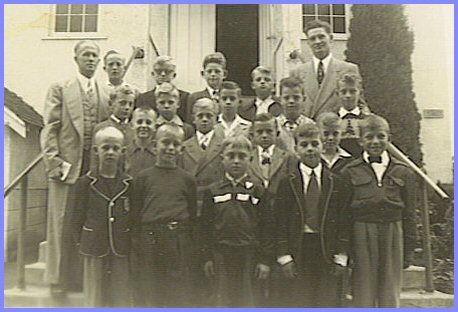 biblical
scholarship and modern theology out of the seminary classroom into the
congregation. They also used updated pedagogical techniques, often reflecting
the influence of John
Dewey (1859-1952), who represents the high point of American progressive
education. For both the Anglican Church and the United Church, the new
curricula proved controversial both theologically and pedagogically.
(Picture: Sunday school class, early 1950s, attended
by Pat Gillis and Elmer Wiens in Yarrow, B.C.)
biblical
scholarship and modern theology out of the seminary classroom into the
congregation. They also used updated pedagogical techniques, often reflecting
the influence of John
Dewey (1859-1952), who represents the high point of American progressive
education. For both the Anglican Church and the United Church, the new
curricula proved controversial both theologically and pedagogically.
(Picture: Sunday school class, early 1950s, attended
by Pat Gillis and Elmer Wiens in Yarrow, B.C.)
In the United Church, General Council had agreed on a new curriculum in 1952, and a set of principles was agreed in 1958 (United Church of Canada, "A Statement from the Board of Christian Education and the Board of Publication," Prospectus: A look at the new curriculum, including the presuppositions (on which it is based), the principle (by which it is organized), and some of its distinctive features, 1961. ) Peter Gordon White was general editor. The first book out was Donald Mathers' The Word and the Way (1962); it was intended for adults, and sold an extraordinary 600,000 copies. Material for children began to be produced in 1964. It followed a three-year cycle:
- Year 1, Old Testament
- Year 2, Jesus Christ and the Christian Life
- Year 3, The Church and the World.
Teachers had to prepare their lessons with the help of study guides, and ministers complained that the demands of the job made it hard to recruit teachers.
A list of as many books in the series as I could find is given in the left-hand column. It will be noted that several authors were seminary professors. Many were influenced by neo-orthodoxy, which was not true of those who wrote the Anglican new curriculum. Neo-orthodox thinkers have a high (though not inerrantist) view of Scripture and anti-liberal tendencies. Nevertheless, the new curriculum did take Biblical criticism seriously, and as a result conservatives complained that it was modernistic and anti-Bible.
Baptists, who in 1937 had appointed a Christian education consultant to the United Church Publishing House, adapted some of these materials to their own use.
In the Anglican Church,
in 1959 a new primate, 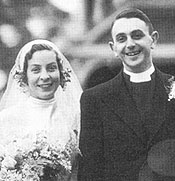 Archbishop
Howard Clark, pictured left, 24 years earlier, with his bride Anna,
appointed a new general secretary of the General Board of Religious
Education, Michael Creal (now retired as a professor of humanities at
York University). He and his staff presented the principles of the new
curriculum for approval by General Synod in 1962. The Seabury curriculum
of the Episcopal Church was a model. Study materials began appearing in
1964. Conservatives criticized them for their liberalism. In fact, one
of Creal's staff, Ernest Harrison, later had his clerical license withdrawn
by the bishop of Toronto for heterodox statements. But more broadly, it
was hard to find Sunday school teachers willing to undergo the training
necessary to teach the materials, and rural Canadians objected to their
perceived southern Ontario bias. George Luxton, the influential bishop
of Huron (the second largest diocese by population in the country), wrote:
Archbishop
Howard Clark, pictured left, 24 years earlier, with his bride Anna,
appointed a new general secretary of the General Board of Religious
Education, Michael Creal (now retired as a professor of humanities at
York University). He and his staff presented the principles of the new
curriculum for approval by General Synod in 1962. The Seabury curriculum
of the Episcopal Church was a model. Study materials began appearing in
1964. Conservatives criticized them for their liberalism. In fact, one
of Creal's staff, Ernest Harrison, later had his clerical license withdrawn
by the bishop of Toronto for heterodox statements. But more broadly, it
was hard to find Sunday school teachers willing to undergo the training
necessary to teach the materials, and rural Canadians objected to their
perceived southern Ontario bias. George Luxton, the influential bishop
of Huron (the second largest diocese by population in the country), wrote:
The new curriculum, with its somewhat hesitant attitude about faith and doctrine, with its oblique reference to and use of the bible, and with its incorpration of the newer, open-ended method of teaching, disturbed and puzzled our teachers; and many of them were frightened out of their calling.
Relatively few parishes adopted the new curriculum, which was the Anglican Church's last effort at a national Sunday school program.
Evolving approaches to the family
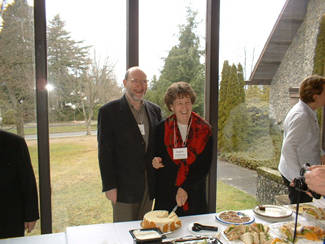 Marriage.
United Church. Terry and Daphne Anderson, pictured right,
in the essay listed in the left-hand column (adapted in "Marriage,
Sex and Family: Have We Strayed from the Way?" in Fellowship Magazine
20 (2002, 2): 4-7, 19) have studied nine reports on marriage, family,
and sexuality commissioned by the United Church of Canada between 1945
and 1990. They find a clear break between the reports before 1975
and those after. The purpose of marriage is threefold (hallowing
a life-long relation, procreation, a divine, sacramental vocation symbolizing
the kingdom of God), and "the first cluster of reports discusses
sex and sexuality" within the agenda of family and marriage. Afterwards,
the central focus is individual self-fulfilment; with a qualified exception
for a 1984 report, the sacramental dimension is rejected as having "little
basis in the Bible," no God-given purpose in marriage is acknowledged,
and procreation is excluded as a purpose. The Andersons summarize the
principles of the second set of reports as "radical subjectivism
in ethics," and indicate that "no Christian warrant or rationale"
is given for the beliefs expressed. (Anderson is retired as professor
of social ethics at the Vancouver School of Theology.)
Marriage.
United Church. Terry and Daphne Anderson, pictured right,
in the essay listed in the left-hand column (adapted in "Marriage,
Sex and Family: Have We Strayed from the Way?" in Fellowship Magazine
20 (2002, 2): 4-7, 19) have studied nine reports on marriage, family,
and sexuality commissioned by the United Church of Canada between 1945
and 1990. They find a clear break between the reports before 1975
and those after. The purpose of marriage is threefold (hallowing
a life-long relation, procreation, a divine, sacramental vocation symbolizing
the kingdom of God), and "the first cluster of reports discusses
sex and sexuality" within the agenda of family and marriage. Afterwards,
the central focus is individual self-fulfilment; with a qualified exception
for a 1984 report, the sacramental dimension is rejected as having "little
basis in the Bible," no God-given purpose in marriage is acknowledged,
and procreation is excluded as a purpose. The Andersons summarize the
principles of the second set of reports as "radical subjectivism
in ethics," and indicate that "no Christian warrant or rationale"
is given for the beliefs expressed. (Anderson is retired as professor
of social ethics at the Vancouver School of Theology.)
Anglican Church. The following is the preamble to Canon XXI on marriage. Passed in 1967, it reflects the hand of Professor Charles Feilding of Trinity College.
1. The Anglican Church of Canada affirms, according to our Lord’s teaching as found in Holy Scripture and expressed in the Form of Solemnization of Matrimony in the Book of Common Prayer, that marriage is a lifelong union in faithful love, and that marriage vows are a commitment to this union, for better or for worse, to the exclusion of all others on either side. This union is established by God’s grace when two duly qualified persons enter into a covenant of marriage in which they declare their intention of fulfilling its purposes and exchange vows to be faithful to one another until they are separated by death. The purposes of marriage are mutual fellowship, support, and comfort, and the procreation (if it may be) and nurture of children, and the creation of a relationship in which sexuality may serve personal fulfilment in a community of faithful love. This covenant is made in the sight of God and in the presence of witnesses and of an authorized minister.
2. The Church affirms in like manner the goodness of the union of man and woman in marriage, this being of God’s creation[ Cf. Gen. 1:27-31]. Marriage also is exalted as a sign [Eph. 5:31f.] of the redeeming purpose of God to unite all things in Christ [Eph. 1:9f.], the purpose made known in the reunion of divided humanity in the Church [Eph. 2:11-16].
3. The Church throughout its history has recognized that not all marriages in human societyconform, or are intended to conform, to the standard here described. For this reason, in the exercise of pastoral care as evidenced in the earliest documents of the New Testament, the Church has from the beginning made regulations for the support of family life especially among its own members.
4. Aspects of the regulation of marriage in the apostolic Church are recorded in the New Testament. A new standard of reciprocal love between husband and wife was introduced leading towards an understanding of their equality [I Cor. 7:3f., 11:11f., Eph. 5:21-33, cf. Gal. 3:28]. In preparation for marriage Christians were directed to seek partners from among their fellow believers [I Cor. 7:39, II Cor. 6:14, cf. I Thess. 4:2-8 (RSV)]. In Christ’s name separated spouses were encouraged to seek reconciliation [I Cor. 7:10f.]. In his name also divorce was forbidden though not without exception [Matt. 5:31f., Mark 10:2-9, cf. Mal. 2:13-16]. In certain circumstances a believer already married to an unbeliever might be declared free from such a marriage bond [I Cor. 7:12-16]; in others, and here in the name of Christ, remarriage during the lifetime of a former spouse was described, with one exception, as an adulterous union [Matt. 19:9, Mark 10:11f., Luke 16:18, cf. Rom. 7:3].
5. From these principles and precedents the Church, living in many cultures and in contact with many different systems of law, has sought in its rites and canons to uphold and maintain the Christian standard of marriage in the societies in which believers dwell. This standard and these rites and canons pertain to the selection of marriage partners, preparation for marriage, the formation of a true marriage bond, the solemnization of marriage, the duties of family life, the reconciliation of alienated spouses, and to the dissolution of marriage and its consequences.
6. All members of this Church, in fulfilling the obligations of the People of God, share according to their circumstances in the obligation to uphold Christian standards of marriage in human society especially by care for their own families and by neighbourly care for the families of others. Special obligations rest upon certain members of the Church as set forth below.
7. The particular duties of the clergy, described in part elsewhere in this Canon, include the provision of education for marriage and family life, the solemnization of marriage, the pastoral care of families, the encouragement of reconciliation of estranged spouses, and the pastoral care of those whose family ties have been broken or interrupted by death, sickness, poverty, enforced absence, human weakness, or by wilful act.
8. The duties of the laity, according to their several circumstances, are to share with the clergy the responsibility for upholding family life, in particular:
a) by their presence with friends and neighbours at weddings to bear witness to their support of those who marry;
b) to safeguard the legality of marriages by readiness to allege promptly any cause or just impediment which might make a proposed marriage unlawful;
c) to promote and encourage the use of the professional skills that serve family life;
d) as spouses, to be faithful to their own marriage vows;
e) as parents, guardians, god-parents, teachers, or other fully qualified persons, to guide children and young persons in preparation for family life;
f) as neighbours, mutually to promote the welfare of families, and to seek the reconciliation of any whose family life is impaired or broken;
g) as communicants, to uphold the Church’s discipline, and to seek the restoration to communion of any who have become alienated or are excommunicate; and
h) as citizens, to work for the maintenance of just laws for the welfare of family life.
Birth control. Until 1969, section 150 of the Criminal Code made it a crime to prevent conception, and until 1937 it was understood that section 207, which made it a crime to circulate immoral literature, thereby prohibited the dissemination of birth control information. A movement for birth control began in Canada in the 1920s. Birth control societies began operating openly in the 1930s. In 1936 Dorothea Palmer was charged with disseminating birth control information in the Ottawa area, but was acquitted in 1937, on the grounds permitted under section 207 of the Criminal Code that the offence had served the public good, and an appeal by the Crown was dismissed. Information was, however, generally available only to married women. In 1960 Harold Fine, a phamacist, was charged, found guilty, and fined for distributing condoms through the mail. Partly in reaction, Planned Parenthood of Toronto was formed in 1961, with support from the Anglican, Presbyterian, and United Churches. The birth control pill, possibly the most socially significant medical advance in the twentieth century, was developed by the American biologist Gregory Pincus, and was commercially introduced in 1961. This launched "the sexual revolution."
The churches and birth control.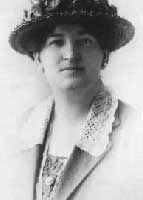 In the 1920s Nellie
McClung, pictured left, as a member of the Alberta legislature,
campaigned for liberalized birth control. In the Anglican Communion, the
Lambeth Conference of 1930 admitted the moral possibility of birth
control in restricted circumstances. In 1945 a birth
control committee of the Mennonite Conference of Ontario determined
that modern birth control methods "tend to a reversal of God's holy
law given at creation," but in 1975 a poll indicated that 47% of
Mennonites believed that birth control was never wrong. Some Christian
groups and writers continue
to see artificial contraception as immoral.
In the 1920s Nellie
McClung, pictured left, as a member of the Alberta legislature,
campaigned for liberalized birth control. In the Anglican Communion, the
Lambeth Conference of 1930 admitted the moral possibility of birth
control in restricted circumstances. In 1945 a birth
control committee of the Mennonite Conference of Ontario determined
that modern birth control methods "tend to a reversal of God's holy
law given at creation," but in 1975 a poll indicated that 47% of
Mennonites believed that birth control was never wrong. Some Christian
groups and writers continue
to see artificial contraception as immoral.
Divorce. The British North America Act (1867) gave jurisdiction over divorce to the federal government. In practice pre-Confederation provincial courts of divorce continued to function, but in those provinces that had no pre-Confederation courts of divorce, persons could be divorced only by obtaining a private Act of Parliament. After World War I, several additional provinces obtained divorce courts for their residents, leaving only Quebec (and, after 1949, Newfoundland) without a divorce court. In most provinces adultery was the only ground for divorce (Nova Scotia allowed cruelty as a ground). In 1968 the federal government finally exercised its jurisdiction over divorce by passing the Divorce Act. This permitted both no-fault and at-fault divorce processes. (Under the current Divorce Act of 1986, there is only one ground, "breakdown of marriage".) Canadian divorces totaled 373 in 1919, more than 40,000 in 1973, and 96,200 in 1987. (A graph of marriages and divorces in Canada, 1921-2002, is available from Statscan.)
In the United Church, General Council decided in 1962 that ministers could administer the re-marriages of divorced persons. The Presbyterian Church in Canada made new, relatively flexible statements on divorce in 1964 and 1968. In the Anglican Church, General Synod in 1962 created a "Commission on Marriage and Related Matters" chaired by Charles Feilding of Trinity College, which recommended allowing the re-marriage in church of divorced persons under certain circumstances. General Synod accepted this recommendation in 1967 and passed Canon XXVII, the only canon with a theological preamble; this created matrimonial diocesan commissions to determine whether a divorced person might be allowed to re-marry in church. (In 2004 General Synod permitted dioceses to abolish matrimonial commissions.)
Evolving views of women in ministry
(Below right: Presbyterian deaconesses, 1916-1917, from the Presbyterian committee on history.)
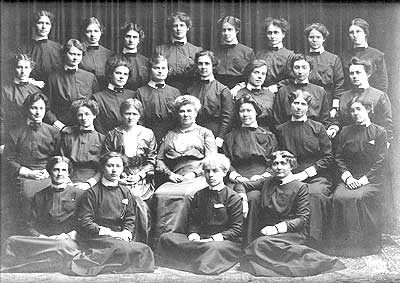 For the churches,
this very large topic was focused in the controversies over the ordination
of women, which raised a great many issues of Biblical authority and interpretation,
the role of ecclesiastical tradition, the nature, purpose, and social
function of gender and sexuality, and the theology of ministry. Although
there had long been many deaconesses in the Anglican, Presbyterian, and
United Churches, these were not usually considered to be ordained ministers
of word and sacrament.
For the churches,
this very large topic was focused in the controversies over the ordination
of women, which raised a great many issues of Biblical authority and interpretation,
the role of ecclesiastical tradition, the nature, purpose, and social
function of gender and sexuality, and the theology of ministry. Although
there had long been many deaconesses in the Anglican, Presbyterian, and
United Churches, these were not usually considered to be ordained ministers
of word and sacrament.
Church discussions were also coloured by the rise of modern feminism, often dated to 1963 when Betty Friedan published The Feminine Mystique. Rightly or wrongly, Protestants' attitudes towards the ordination of women often reflected their attitudes towards feminism.
Ordination of women. The United
Church of Canada first ordained a 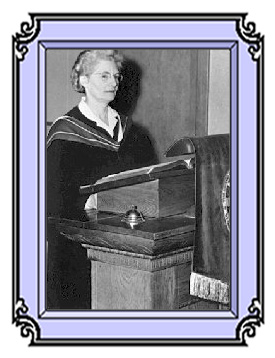 woman
in 1936 (Lydia
Gruchy, pictured right, who was a Presbyterian prior to union),
after many years of controversy. Until 1964 it remained very difficult
for a married woman to be ordained, although it was possible for an ordained
woman to get married. (Lois Wilson, later a United Church moderator, graduated
from theological college in 1950, but she was married, and it was not
until 1966 that she was ordained. By exception, Elinor Leard, who was
not only married but even a mother, was ordained in 1957 by London Conference,
against the recommendation of its own Committee on Colleges and Students
and despite a telegram from the moderator.) It was only around 1975 that
the ordination of women began to be somewhat common. See
Valerie J. Korinek, "No women need apply: ordination in the United
Church, 1918-1965," Canadian Historical Review 74 (1993):
473ff.
woman
in 1936 (Lydia
Gruchy, pictured right, who was a Presbyterian prior to union),
after many years of controversy. Until 1964 it remained very difficult
for a married woman to be ordained, although it was possible for an ordained
woman to get married. (Lois Wilson, later a United Church moderator, graduated
from theological college in 1950, but she was married, and it was not
until 1966 that she was ordained. By exception, Elinor Leard, who was
not only married but even a mother, was ordained in 1957 by London Conference,
against the recommendation of its own Committee on Colleges and Students
and despite a telegram from the moderator.) It was only around 1975 that
the ordination of women began to be somewhat common. See
Valerie J. Korinek, "No women need apply: ordination in the United
Church, 1918-1965," Canadian Historical Review 74 (1993):
473ff.
In the Presbyterian Church of Canada, the General Assembly passed a declaratory act in 1966 enabling women to be ordained to the eldership and the ministry of word and sacrament. This followed thirteen years of study. (Here's a PCC archives finding aid on this subject, in PDF format, with a brief history of the controversy.)
In the Anglican Church of Canada, the ordination of women to the priesthood came onto the agenda of General Synod from Lambeth Conference in 1968, which asked Anglican provinces to study the issue. General Synod appointed a commission which decided that there were no theological objections to the practice. A resolution approving the ordination of women was passed in 1973, and re-approved in 1975. Women were first ordained to the priesthood on St. Andrew's Day, November 30, 1976. See Wendy Fletcher, Beyond the Walled Garden: Anglican Women and the Priesthood, Dundas: Artemis Enterprises, 1995.)
Evolving views of sexual orientation
Issues of equality and human rights on the basis of sexual orientation,
and the blessing of same-sex unions and the practicing of homosexual persons,
were only beginning to come onto church agendas in the 1960s. In 1969
Parliament adopted Bill C-150, which removed homosexuality from the Criminal
Code. In the same year a group that later became known as Dignity was
formed in San Diego as a Roman Catholic support group for gays and lesbians.
In 1975 Integrity
was formed with a similar purpose for Anglicans and Episcopalians. In
1982 Affirm/Affirmer
was formed with a similar purpose in the United Church. In 1976 an American
Jesuit psychotherapist, 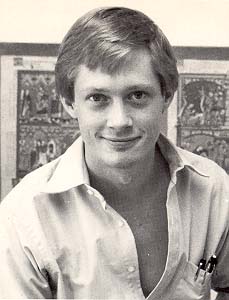 John
J. McNeill, published The Church and the Homosexual, reinterpreting
individual scriptural passages which had previously been assumed to express
God's judgment against homosexual behaviour. In 1980 a gay professor at
Yale, John
Boswell, pictured left, published Christianity, Social Tolerance,
and Homosexuality, arguing that the Christian Church had no objection
to homosexuality until at least the fourth century. (Boswell died of AIDS
in 1994.) Both these books were influential in discussions of the issues
among Canadian Protestants.
John
J. McNeill, published The Church and the Homosexual, reinterpreting
individual scriptural passages which had previously been assumed to express
God's judgment against homosexual behaviour. In 1980 a gay professor at
Yale, John
Boswell, pictured left, published Christianity, Social Tolerance,
and Homosexuality, arguing that the Christian Church had no objection
to homosexuality until at least the fourth century. (Boswell died of AIDS
in 1994.) Both these books were influential in discussions of the issues
among Canadian Protestants.
In the United Church of Canada, the "Towards a Christian Understanding of Sexual Orientation, Lifestyles, and Ministry" report (SOLM) of 1988 commended consideration of ordaining homosexual persons. This report was rejected, but a revised report appeared as the statement "Membership, Ministry, and Human Sexuality" (MMHS), which declared that all persons, "regardless of sexual orientation," could be considered for ordination. MMHS was approved by General Council in 1988. Surrounding these documents flew an immense controversy, which included numerous memorials from lower courts of the Church, many of which apparently got lost in the national office. An appeal of the MMHS decision on the grounds that the resolution violated the constitution of the denomination was rejected by Howie Mills, the general secretary, and he was supported by the Judicial Committee of the Church. The United Church is believed to be the first major denomination in the world to ordain gay persons in a routine and open way. Its decision was much debated by members in following years, and an indeterminate number of members who disapproved of the decision joined other churches. During the SOLM discussions there was created an organization of conservative United Church people called the Community of Concern, which still exists.
In the Presbyterian Church in Canada, General Assembly decided in 1996 to nullify the call of Montreal Presbytery to Darryl Macdonald, a gay Presbyterian of St. Stephen's, Lachine, as ultra vires on the grounds "that the action contradicted scripture, church tradition and various statements that our denomination has adopted in recent years dealing with the issue of homosexual practice." (The resolution and numerous related texts can be searched in Acts and Proceedings, 1996, available as a PDF file.) William Klempa, principal of Presbyterian College, was among those who objected to Macdonald's ordination. Macdonald is slated to be ordained in the United Church, Montreal & Ottawa Conference, in May 2005. A Presbyterian report of "the special committee re sexual orientation", presented in 2003, is available as a PDF file.
In the Anglican Church of Canada, the House of Bishops
refused until 2004 to bring the issue to General Synod for legislative
consideration. Instead, in 1978 they issued a brief statement to the effect
that "the Church confines its nuptial blessing to heterosexual marriage,"
and in 1979 a slightly longer statement that seemed to indicate that gay
persons might be ordained if they were committed to celibacy. In the meantime,
the National Executive Council of General Synod commissioned study guides;
one of them appeared in 1985, under the supervision of the late James
Reed of Trinity College, and another in 1994 called Hearing Diverse
Voices, Seeking Common Ground. Dioceses were encouraged to promote
dialogue among persons with differing views on the issues. In the diocese
of New Westminster, an impatient bishop and synod decided that they had
the jurisdiction to authorize same-sex blessings and write their own liturgies,
and after three lengthy discussions at three successive synods, decided
in favour of doing so in 2002. A
same-sex rite was issued in May 2003, and the
first same-sex blessing followed on May 28.  (The
couple, Michael Kalmuk, 49, and Kelly Montfort, 62, are pictured here
with their rector, Margaret Marquardt.) The result was an international
furor, condemnation by the archbishop of Canterbury, the withdrawal of
several parishes from the diocese of New Westminster, attempts at intervention
by other bishops, and an
international Anglican commission which requested an apology from
the bishop of New Westminster for defying Anglican order (which he has
steadfastly refused to offer). General Synod in 2004 decided against authorizing
same-sex blessings, but passed
a resolution apparently affirming their validity.
(The
couple, Michael Kalmuk, 49, and Kelly Montfort, 62, are pictured here
with their rector, Margaret Marquardt.) The result was an international
furor, condemnation by the archbishop of Canterbury, the withdrawal of
several parishes from the diocese of New Westminster, attempts at intervention
by other bishops, and an
international Anglican commission which requested an apology from
the bishop of New Westminster for defying Anglican order (which he has
steadfastly refused to offer). General Synod in 2004 decided against authorizing
same-sex blessings, but passed
a resolution apparently affirming their validity.
The Hymn Book
Finally, theological evolution can be studied by looking at hymn books. The Anglican-United Church Hymn Book of 1971, commonly called "the red book," repays study, especially in relation to the hymn books which preceded and followed.